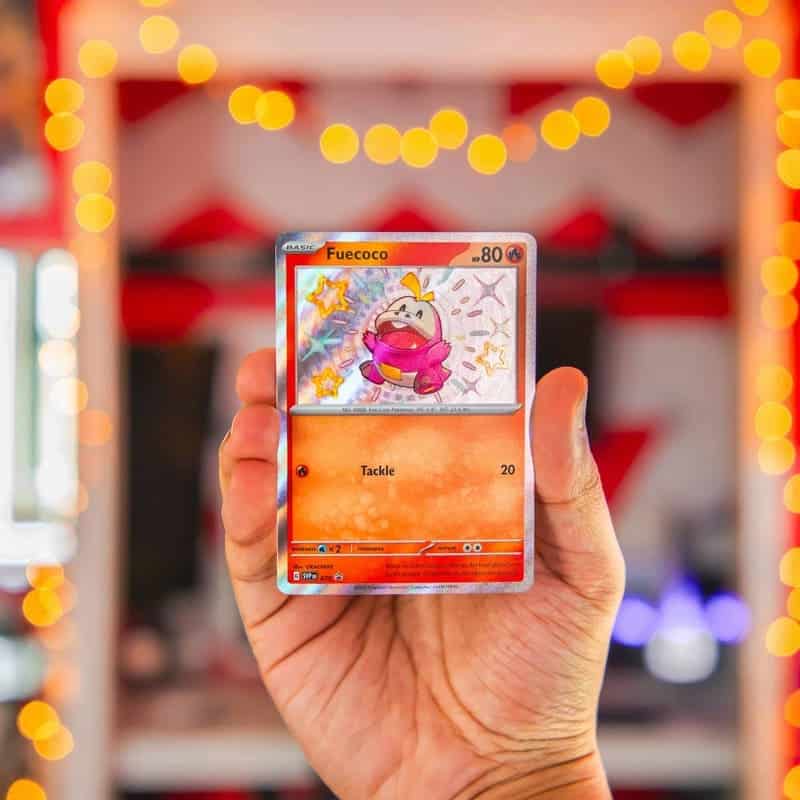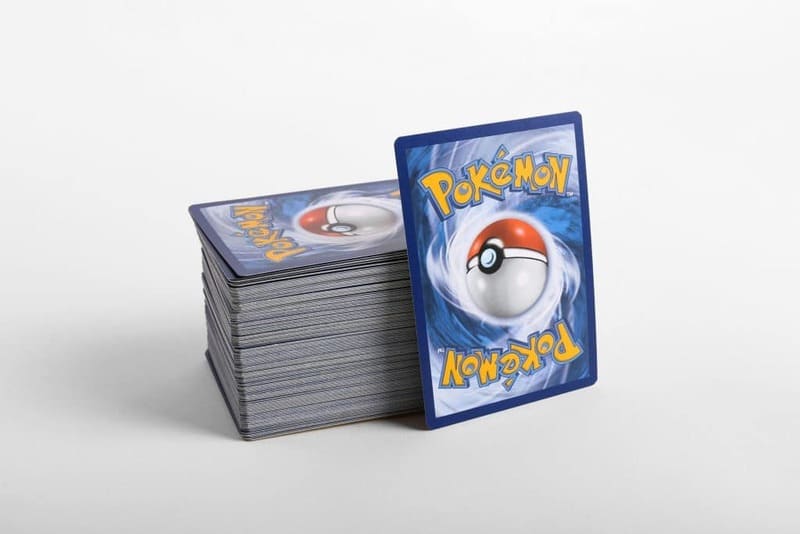Identifying genuine Pokémon cards from counterfeits can be difficult. In this article, I’m going to go over everything you need to know on how to know if Pokémon cards are fake.
Believe it or not, the market for Pokémon Cards continues to boom, even in 2024! Card prices have continued to increase and that doesn’t seem to be coming to an end anytime soon! Unfortunately, with this popularity, people are creating and selling fake cards.
Here’s How To Know If Pokémon Cards Are Fake in 2024
Card Stock and Texture
Pokémon cards are printed on quality card stock, offering a sturdy and flexible feel. The surface is smooth with a slight gloss to it, while the back side feels matte. Genuine cards have a consistent thickness.
Fake cards may feel flimsy, overly glossy, or rough. They might differ in thickness from genuine cards. I recommend doing a physical comparison with a confirmed real card as, to me, this is the best way to find out if a card is fake or not.
Print Quality
Print quality is another great way how to know if Pokémon cards are fake. Genuine Pokémon cards undergo a strict printing process, so the results are always sharp. The colors on these cards are rich and accurately reflect the intended design. The print quality is consistent across all cards.
Counterfeit cards often display poor print quality, featuring blurry images, faded colors, and misaligned text. Look for pixelation or inconsistencies in color saturation.
Borders and Edges
Authentic Pokémon cards have even borders and smooth edges. The borders around images and text are uniform in width.
Fake Pokémon cards have been known to have border errors. Images, text, or colors may extend too far, causing a lack of symmetry, and edges might appear rough or don’t have clean edges.
Text and Font
Authentic Pokémon cards have standardized text and font styles, with clear, sharp letters that are easy to read. Each type of text follows specific formatting rules, and spelling errors or misprints are extremely rare.
Counterfeit cards often have noticeable font issues. This could be incorrect fonts, inconsistent spacing, or uneven alignment. Misspellings or incorrect information are common.
Holographic Elements
Authentic Pokémon cards have very distinct holographic patterns that vary by set. For example, older card sets feature a more “starry” effect, while newer ones have swirls or lines. I would also like to add that these holographic effects reflect light both uniformly and smoothly.
Counterfeit cards often have holographic effects that aren’t consistent. This could be uneven or dull holographic areas. Look for incorrect patterns, pixelation, or grainy textures since they’re one of the best indicators of a counterfeit card.
Wrapping Up
Staying observant and using the techniques I listed above will help you learn how to know if Pokémon cards are fake. By adhering to these guidelines, you can protect your collection’s authenticity and value for years to come.
Checkout why Pokemon Emerald is going strong!
About The Author
Brianna Goulet is an expert content writer with over five years of experience in crafting engaging and compelling content across various platforms. Alongside her professional work, she is pursuing a bachelor’s degree in Zoology and Pre-veterinary Medicine from the University of Central Florida, after completing an AA degree in Marine Biology from Seminole State College of Florida.
When she’s not studying or creating content, you’ll find her lost in the pages of a book, capturing shots of wildlife through her lens, or immersing herself in the gaming world. Follow Brianna on X: @briannagwrites
For More Great Content
If you liked this, check out our Gaming content here!
Total Apex is an all-encompassing content producer. We provide heavily-detailed articles every day on entertainment, gaming, sports, and so much more! Check out all our great sports content Total Apex Sports. Check us out on X @TotalApexEandG and our other sites: Total Apex Entertainment, Total Apex Gaming, Total Apex Sports Bets, and Total Apex Fantasy Sports. For more articles by Brianna Goulet, click here!



